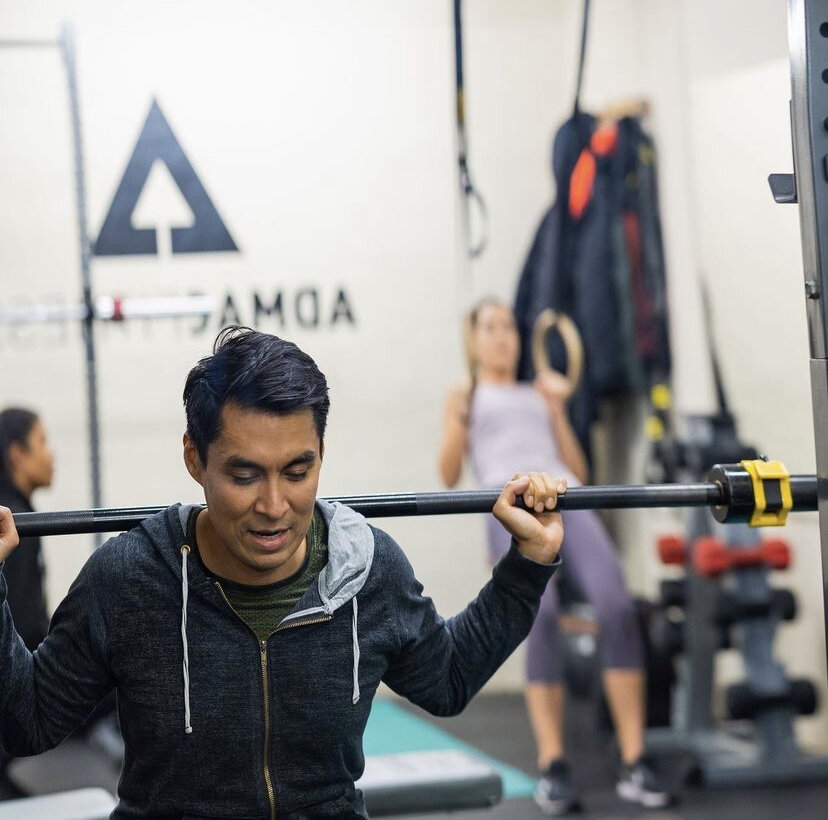Training your legs is super important. Whilst the oldest cliche in weight training is missing leg day, you can’t deny that strong legs have a knock-on effect all over the body.
Legs are the base on which the rest of your body is built. When you perform exercises such as squats, lunges, stiff leg deadlifts etc you don’t just benefit your legs - you’ll train your back and core as well. You’ll be improving your joint stability and your injury resistance. Your athleticism will improve, not to mention your overall musculature.
When you weight train you stimulate the release of human growth hormone. When HGH release is stimulated, it benefits the whole body. Given the legs are the biggest of all the muscle groups, training them stimulates the largest release of human growth hormone.
In short, train your legs and EVERYTHING benefits!
Now we’ve established that leg training is important, let’s look at ways we can make it even more beneficial to you as a lifter. All of these approaches are evidence-based and should feature in your leg workouts…
Include Single leg Movements
One of the quickest and most effective ways of building overall strength is by ironing out any strength imbalances between sides. I like to do this with single-sided, or unilateral movements.
There’s not just a strength imbalance issue at play here - there’s a sporting element. We know that bilateral deficits exist (where one side is weaker than the other), which can impact sporting performance - jumping off one leg, accelerating when running or even changing direction is worse when you have a weaker side.
Ironing out these with split squats etc is very helpful in a sporting and injury resistance sense.
Improve Range of Movement
When you work through a full range of movement, you improve the strength of the muscles and the health of a joint. Unfortunately most people can’t manage to do that with squats and lunges, so they need help with it.
Weightlifting shoes are a massive help, because they raise the heels, making it easier to achieve greater squat depth. This means you increase the time under tension of the muscles, which improves their strength and capacity to lift (it removes any ‘sticking points’ in a lift).
Another way is to add a squat wedge. These have exploded in popularity over the last few years, and rightly so - they’re an excellent way of helping lifters to increase their range of movement and therefore strength on squats, lunges and split squats.
Include lateral movements
In the gym, most people perform leg exercises in one direction. The knees will move forwards and backwards, but rarely side to side. Whilst this is great from a squat and lunge strength perspective, it does little good for athletes who require side to side/lateral movements of their knees and legs as a whole.
If you participate in a sport that includes change of direction (which is most sports), you need to training your legs in a side-to-side manner as well. Research shows that lateral knee stability is improved by exercises that do this.
Follow the advice in this video to help you include these exercises into your training…
Mix up rep ranges
True fitness and strength will include a broad range of rep requirements in training. If you’ve spent your entire lifting life working in the same narrow rep range (usually 3 sets of 10), then you’ll only be good at that.
One way to mix things up and really improve the effectiveness of your leg training is to switch up the type of leg training you do. Adding high repetition sets (20+) to your workouts, as well as high weight, low rep sets (1-5 reps) will help to make you strong across a wide range. You’ll be strong and have great lower body endurance, which makes you truly versatile and will help build a lot of muscle.
Include power movements
People mix up power and strength, when they’re actually two very different things. You can be strong but not powerful, and powerful but not strong. Here’s a simple explanation…
Power is your ability to move a mass (weight, ball, yourself etc) at speed. Examples include throwing, jumping, weightlifting.
Strength is your ability to move a heavy mass, regardless of the speed. Examples being heavy squats, deadlifts, presses etc.
In most sports, power is more useful than strength. You build power by lifting lighter weights at high speed, but with an effort on large muscle groups. Think plyometrics, olympic weightlifting etc. Of course you need to have some level of strength in order to generate power, but by biasing power training, you’ll develop more useful sporting abilities and be generally ‘life fitter’.
5 Ways to Make Leg Day More Beneficial - Concluded
Leg day should be an integral part of your weekly training. Even if you’re only interested in aesthetics, leg training is important (as we discussed earlier).
By adopting these five lessons into your leg training, you’ll make it more useful, beneficial and effective.
If you want your health and fitness journey to be guided by the best personal training team in East London, get in touch with us at AdMac Fitness. We operate from our private personal training studio in Bow, E3. Contact us on 07921465108 or email us at admacfitness@gmail.com. We look forward to hearing from you!




































